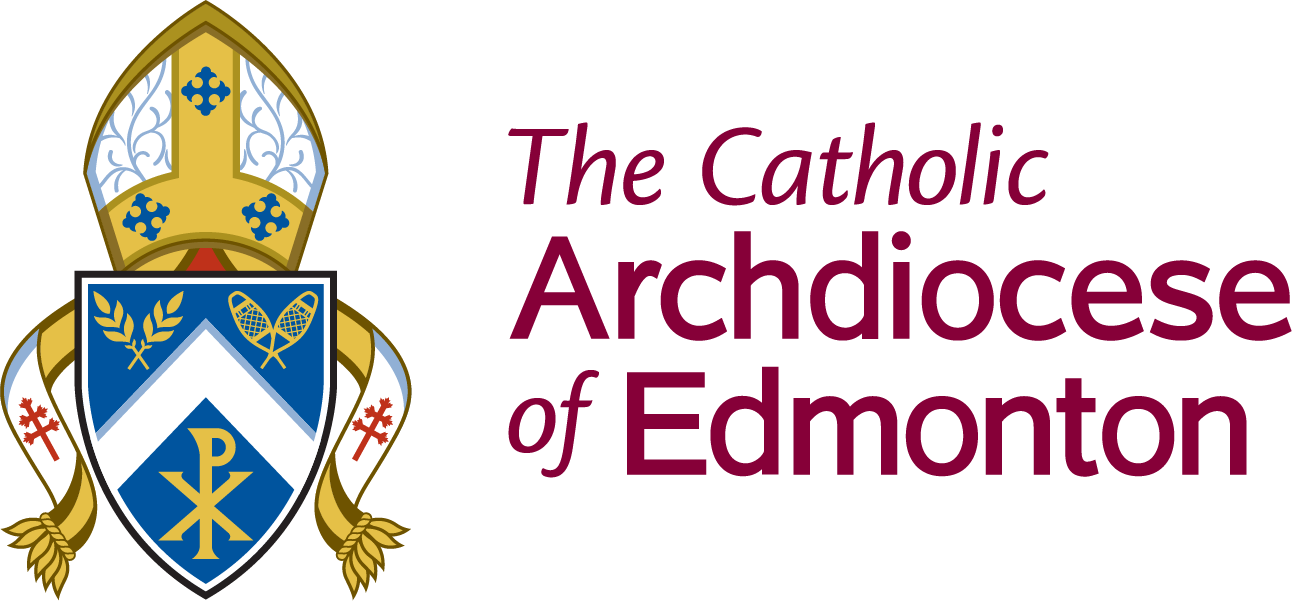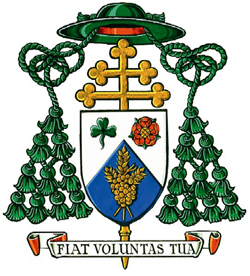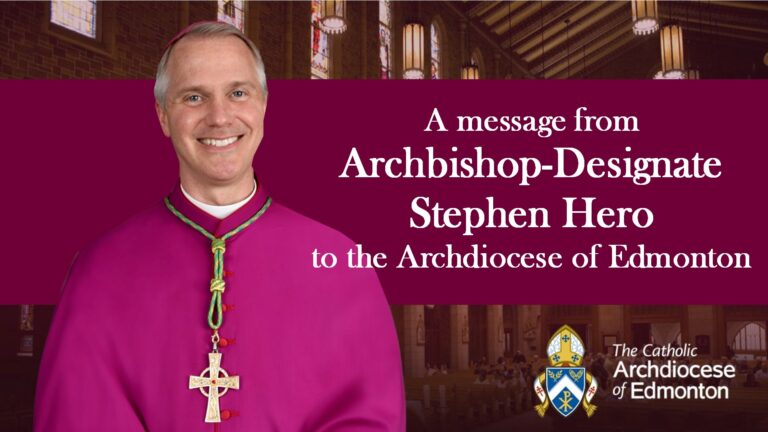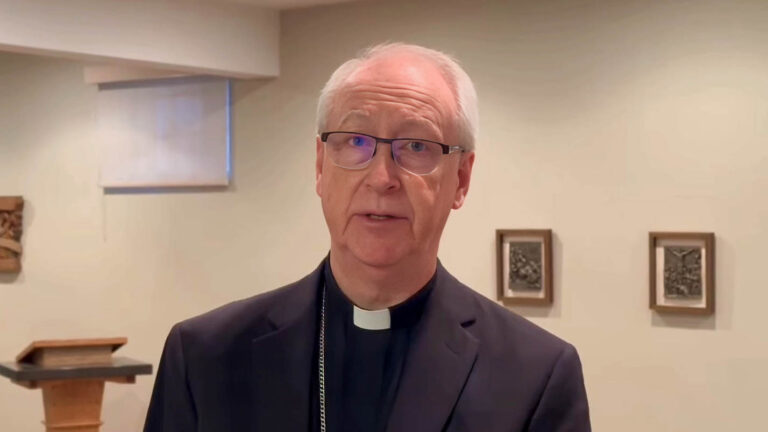Mass of Thanksgiving for Papal Visit Volunteers
Homily
[Galatians 1: 6-12; Psalm 111; Luke 10: 25-37]
When at Maskwacis Pope Francis decided to visit the sites in his wheelchair rather than by either the Fiat or Popemobile, he communicated symbolically why he had come – a person himself in need of healing hoping to offer healing to others. In so doing he communicated what our journey is to be: people ourselves in need of healing seeking to offer healing to others. Aware of our own brokenness and need, we each must reach across to that of the other in mutual awareness and trust, and thus bridge the divide caused by any feelings of superiority or inferiority. Both are an illusion. We need each other, and the path forward together will unfold from the recognition and acceptance of this truth.
That is the heart of our journey together. To borrow from the Lord’s parable, we are called to be Good Samaritans to one another, ready to bind up one another’s wounds. This recognition of mutual need and mutual giftedness is vital, since the road that we shall continue to walk together will be full of challenges. Many of those are also evoked by the parable, a story that concerns travellers walking along a road.
The road in question is that which runs between Jerusalem and Jericho. The first aspect of that road to note is the very steep descent from one city to the other. Jerusalem is on a hill at about 2300 feet above sea level, while what was once the walled city of Jericho is 900 feet below, a drop of 3200 feet. As we look back over the road of Canadian history, we are increasingly aware that we have at times descended to some very low places through acts reflective of racism toward Indigenous Peoples and a sense of our cultural superiority. These often led us to wall ourselves off from one another by suspicion and misunderstanding.
That road in the parable also helps us see aspects of the pathway unfolding beneath our feet at present. The journey from Jerusalem to Jericho threads through hot and dry desert land, along which thieves and brigands often attacked the traveller. It remains sadly true that relationships between the citizens of this land and the Indigenous Peoples are often marked by the arid atmosphere of indifference, which actually robs us of knowing the beauty of Indigenous traditions and the wisdom of their cultures.
As to our future journey together, the road of the parable marks out for us both challenge and hope. We are at a pivotal moment of our history where we are reversing direction, please God, moving away from Jericho and toward Jerusalem. It is a steep climb, and at times the obstacles facing us may seem insurmountable. Yet hope arises as we consider the destination. Jerusalem is the place where Jesus died and rose again, the paschal mystery by which the Lord reconciled humanity to the Father. Jerusalem, in other words, is the place of reconciliation, the destination to which we are all now irrevocably committed to walk together.
On this steep and at times challenging road of hope, we do not walk alone. Jesus walks with us. This is what the Holy Father wanted to communicate above all by making what was for him a various arduous journey to Canada. He wanted the Indigenous Peoples to experience his closeness to them, and through him, that of the Church. In this he, the Vicar of Christ on earth, wanted to represent to us that Jesus himself walks with us. Jesus came to the world so that all of God’s children might be reconciled to one another. So, we can be sure that he is with us to make sure we arrive at our longed-for destination.
When the Pope made the choice for the wheelchair at the outset of his penitential pilgrimage, those closest to him were not the only ones watching to see what he would do. So, too, was the world. This visit captured the attention of people around the globe like few other papal journeys have. I believe this is because the world as a whole needs reconciliation. Separation reigns: in families; in societies; and between nations. The world was watching to see what would happen, and listening to hear what would be said. The Pope gave them the answer by pointing everyone to the Cross of Jesus Christ. There, we see true reconciliation; there we recognize that it is only by embracing the grace of the Cross that real and lasting reconciliation – that willed by God – will be achieved.
In pointing this out, the Holy Father made clear our mission as followers of the Lord. At Sacred Heart Church of the First Peoples, he said the Church is “the living body of reconciliation”. By living as a reconciled people, and by striving always to be reconciled whenever we are separated from one another, we proclaim in sign the Gospel of our Lord. That is our mission: to proclaim by our actions the Gospel of Jesus Christ and thus show clearly to a watching world that reconciliation is possible, that there is reason to hope.
The grace of the Cross reaches us here on the altar. As we receive tonight the wondrous gift of Holy Communion with our crucified and risen Lord, may that grace take hold in our lives and lead us more deeply to one another as we walk together in hope along the road from Jericho to Jerusalem.
Most Reverend Richard W. Smith
Archbishop of Edmonton
October 3rd, 2022
St. Thomas More Church, Edmonton



